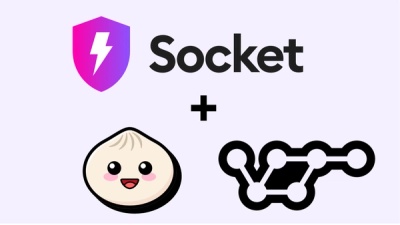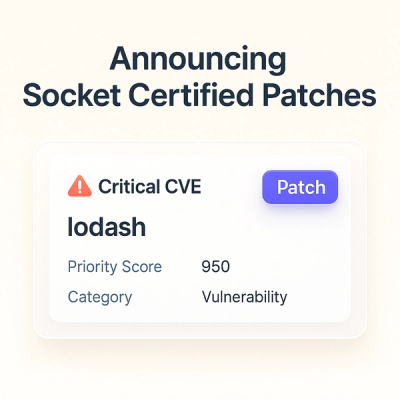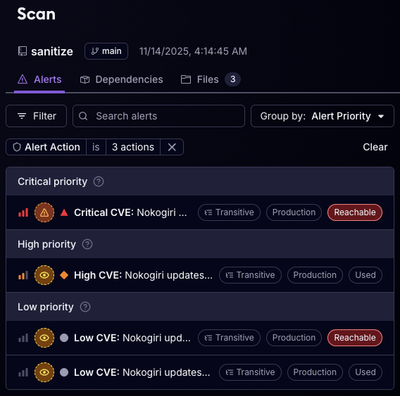
Product
Announcing Bun and vlt Support in Socket
Bringing supply chain security to the next generation of JavaScript package managers
@academysports/fusion-components
Advanced tools
A repository of the common atomic components used across the academy sites
Make sure you are logged-in via npm login or have a .npmrc file with related permisssion to access our private repo with @academysports scope.
Install the fusion components via npm install @academy/fusion-components .
Clone the repository at (https://bitbucket.org/academysports/ui-atomic-components/)
Write your component logic inside components folder
npm start starts a component explorer based on style-guidist which can be used for local developement and reference
npm run generate provides a handy generator, so that you dont have to copy paste stuff :)
For local testing of atomic-components that are in progress do a npm link in the repo which will export the repo as a npm module to your local npm module folder.
Go to your target repo and npm link @academysports/fusion-components to enable a symlink between your consuming repo's node_modules and the atomic-component repository.
Once you have completed developement , pls make sure to export your component in the root index.js . Also add an addition in webpack.dist.config.js's entry option to enable your component to be built. This is a multi-part module , so it requires multiple entry points
Once dev is done - run npm run build to create the dist folder
Run npm pack to generate the tarball to get an idea of how the components are going to be present when you do a npm install
After adding and commiting your components to your branch and raise a PR.
Uses prettier and eslint for linting .
Uses emotionJS for styling
Uses mocha,chai,enzyme,sinon + JSDOM for unit testing.
Atomic design is methodology for creating design systems. There are five distinct levels in atomic design:
Atoms are the basic building blocks of matter. Applied to web interfaces, atoms are our HTML tags, such as a form label, an input or a button. The atoms should be written without margins and positions , position-ing of these atoms should be done by a molecule or organism that uses the atom.
This entire repository drives the atomic components that is used across our ecommerce application . Each atom should be a self sufficient entity , in that it should be unit testable, styled via CSS in JS ,consumable and extendable via props.
Below items are not part of this repository , but hey some theoritcal knowledge :)
Molecules are groups of atoms bonded together and are the smallest fundamental units of a compound. These molecules take on their own properties and serve as the backbone of our design systems.
For example, a form label, input or button aren’t too useful by themselves, but combine them together as a form and now they can actually do something together.
Organisms are relatively complex UI components composed of groups of molecules and/or atoms and/or other organisms. These organisms form distinct sections of an interface.
Eg: Header,Footer, storelocator can use a combination of molecules and atoms to create a standalone module of a page.
Templates are page-level objects that place components into a layout and articulate the design’s underlying content structure.
We will not be creating any templates in our front-end code as the page layout is to a certain extent determined by AEM
Pages are specific instances of templates that show what a UI looks like with real representative content in place
That is about it here,. now go out there and build something :)
Futher Reading Atomic Design by Brad Frost : http://atomicdesign.bradfrost.com/table-of-contents/
All of our atoms will be moved to npm org repository of Academy npm
Guidelines for component developement - WIP
semver - TBD
host site created by style-guidist - TBD
FAQs
A repository of the common atomic components used across the academy sites
The npm package @academysports/fusion-components receives a total of 0 weekly downloads. As such, @academysports/fusion-components popularity was classified as not popular.
We found that @academysports/fusion-components demonstrated a not healthy version release cadence and project activity because the last version was released a year ago. It has 5 open source maintainers collaborating on the project.
Did you know?

Socket for GitHub automatically highlights issues in each pull request and monitors the health of all your open source dependencies. Discover the contents of your packages and block harmful activity before you install or update your dependencies.

Product
Bringing supply chain security to the next generation of JavaScript package managers

Product
A safer, faster way to eliminate vulnerabilities without updating dependencies

Product
Reachability analysis for Ruby is now in beta, helping teams identify which vulnerabilities are truly exploitable in their applications.